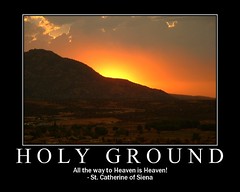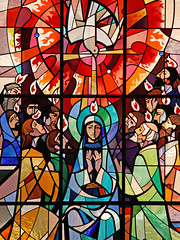 Image via Wikipedia
Image via Wikipedia
To make a start at evaluating the contribution of analytical theology to ecumenism, I will introduce a model of religion. This is taken from Gerard W Hughes God of Surprises, chapter 2, although what follows is mostly my interpretation of his model.
Hughes identifies three stages of human development: childhood, adolescence and adulthood. Each of these stages is associated with one of three elements of religion, namely institutional, critical and mystical in that order.
So, this is a model of faith development. I will examine each of the three elements in detail in future posts. First, I want to examine the relationship between the three elements. They are a progression in the sense that an adult who remains at the institutional stage lacks something. But on the other hand, the later stages contain the previous stages. So, the critical stage is dependent upon and grows out of the institutional, and similarly the mystical grows out of the critical.
This sort of progression is often found in religious experience, so for example in the Church of England, someone on the way to ordination must be a deacon before they are ordained a priest. They do not as a priest cease to be a deacon. In Methodism, similarly there is a progression from local preacher to minister and the minister is still a local preacher. Of course, the Church of England has a third stage, bishop. The bishop is still a priest and a deacon.
So, is it true that someone who is at the adult mystical stage, still holds elements of the institutional and critical? Or to turn the question around, can you become a mystic without experience of the institutional church? I've no idea. Even if I had I'm sure it would take more than one post to explain it.
What I will do to complete this post is to broadly outline the relationship between the three. I think it is simply of the logical pattern of thesis, antithesis, synthesis. The institutional is faith as it is taught to children in the churches. The critical is the negation of that faith in adolescence. The mystical integrates the first two into a third stance, quite different from the other two.
The tragedy is some people get so far and stop. This is perhaps the fault of the institutional church, to some degree but also we all must take some responsibility for the state of our own faith. Sometimes it is too convenient to blame the churches for our own failings.




















Recent Comments